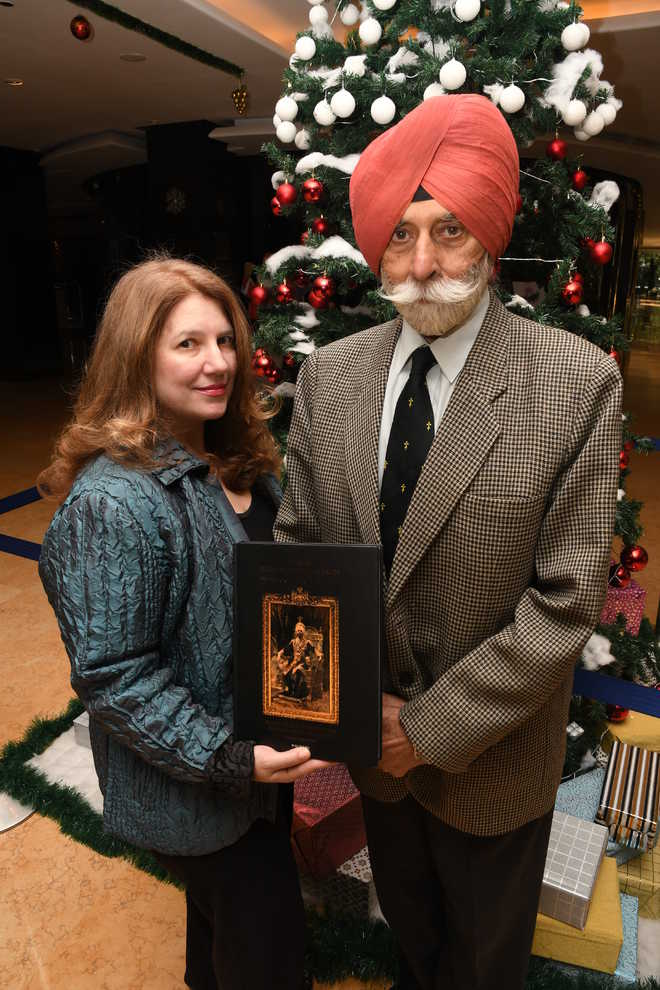The true portrait of a Maharaja
Nonika Singh
Think royalty and you can only envisage extravagant riches, majestic palaces and the roving glad eye. But when a grandson Brigadier Maharaja Sukhjit Singh remembers his grandfather, the last Maharaja of Kapurthala via a book Prince, Patron and Patriarch
Maharaja Jagatjit Singh of Kapurthala, the last thing he wants to empahsise upon is glitz and glitter.
A charmed life, often used in connection with princely rulers, is a phrase he eschews as much as talk of salacious gossip that often accompanies the trajectory of the blue blooded. Brigadier Singh says, “When there is no privacy how can there be charm?”
When he and Cynthia Meera Frederick decided to collaborate on this book, the overriding concern was to bring alive the human being that Maharaja Jagatjit Singh was. Indeed, when an insider picks up a pen, there is a grave danger of objectivity taking a backseat. But Brigadier Singh insists, “The book has come 70 years after his demise, long enough for subjectivity to be tempered with perspective that time lends.” Besides, Brigadier’s glorious innings in the Army has taught him to be rational. So even when he holds the torch for his grandfather or erstwhile princely rulers for that matter, it is backed by erudite arguments.
Of course, a grandson can only see his grandfather as an exceptionally good man and more importantly as a just ruler. Cynthia hails the erstwhile Maharaja as a visionary who could have changed the blueprint of Kapurthala. She also upholds him as a legendary person who straddled the East and the West with remarkable ease, who could converse with Queen Victoria as well as the headman of village.
The grandson recalls his ability to instruct without pontificating. Among the many lessons he learnt from him the most important was—If you err with a motive you will never be forgiven. Besides, he has inherited his discerning ability to differentiate between humility and servility.
Personal qualities aside, for both of them here was a Sikh ruler progressive in all respects who worked for emancipation of women, was secular too who wanted the best place of worship for his subjects and built Moorish mosque at the cost or Rs 3 to 4 lakh.
Material culture also brings us to the only point of dissent the two authors coming from different parts of the world may have had. While Cynthia wanted to bring in the glamorous dimensions of the Maharaja’s life, Brigadier Singh was a bit hesitant and wanted the quintessence of his being to shine the brightest.
But finally as Brigadier puts it, “Word count was the arbiter.” Indeed, they found so much material, including notes of an unfinished autobiography by the Maharaja that the book could have been double the size it is.
As it exists, the book, however, does not run the simple birth to death arc. Instead, it jumpstarts from one facet to another. Vignettes unfold; travel, his association with Queen Victoria and many watershed moments in history, especially Partition that left the Sikh ruler heartbroken. If the book ought to be of great interest to students of history, for the lay reader, each chapter is akin to a hook to trigger their interest .Tthe ultimate aim of the book is to intrigue and whet your curiosity about the man who was a linguist, an exceptional host who sent his chef to train at Le Cordon Bleu. His matrimonial alliance with the Spanish dancer is accounted for. However, without exaggeration and in colours authenticated by the man who knew him from close quarters. An insider’s view or an outsider’s account; the book promises to be an emphatic reminder of the regal era that was.
All things French
Chandigarh where the book, published by Roli Books, was released by the Chief Minister of Punjab, Capt Amarinder Singh, is just the right place for the launch. So aver both the authors, especially Cynthia who reminds us of Maharaja Jagatjit Singh’s love for all things French, language too which he was adroitly fluent in. Corbusier designed city she feels would have had him enthralled and he would have loved to be in this modern marvel in architecture.









